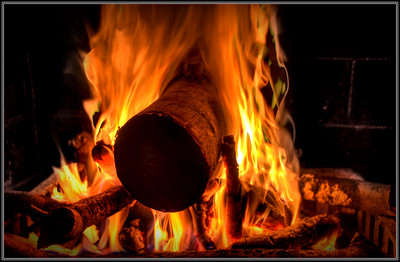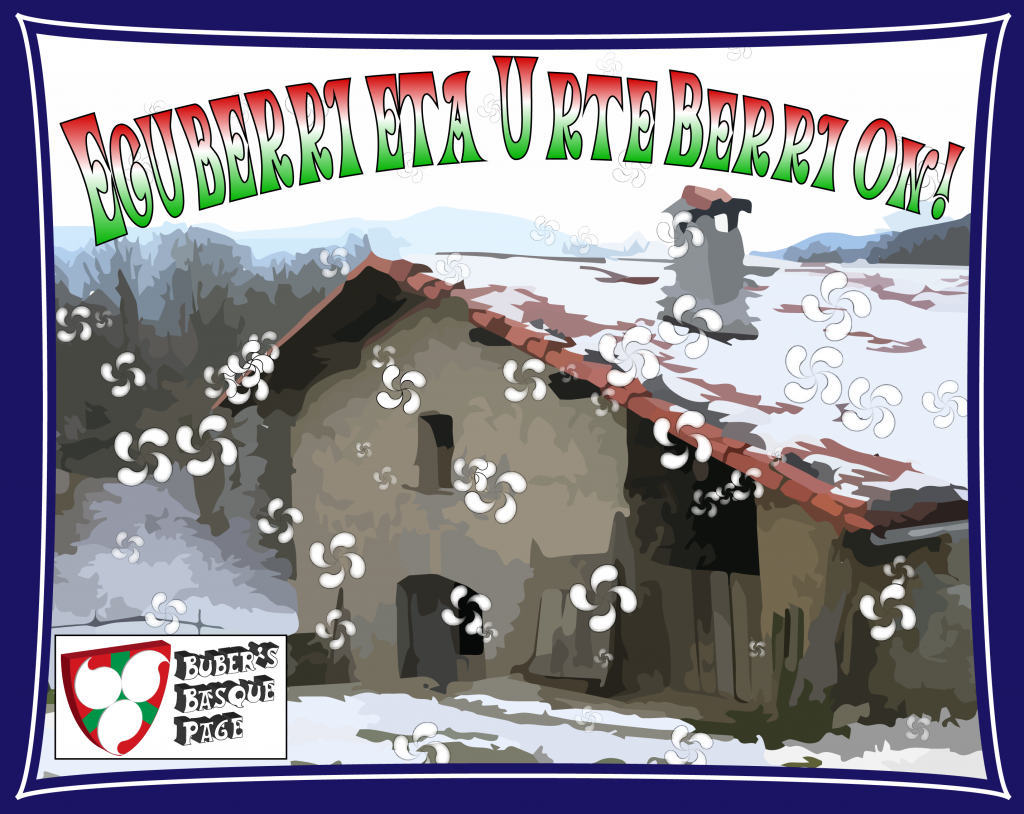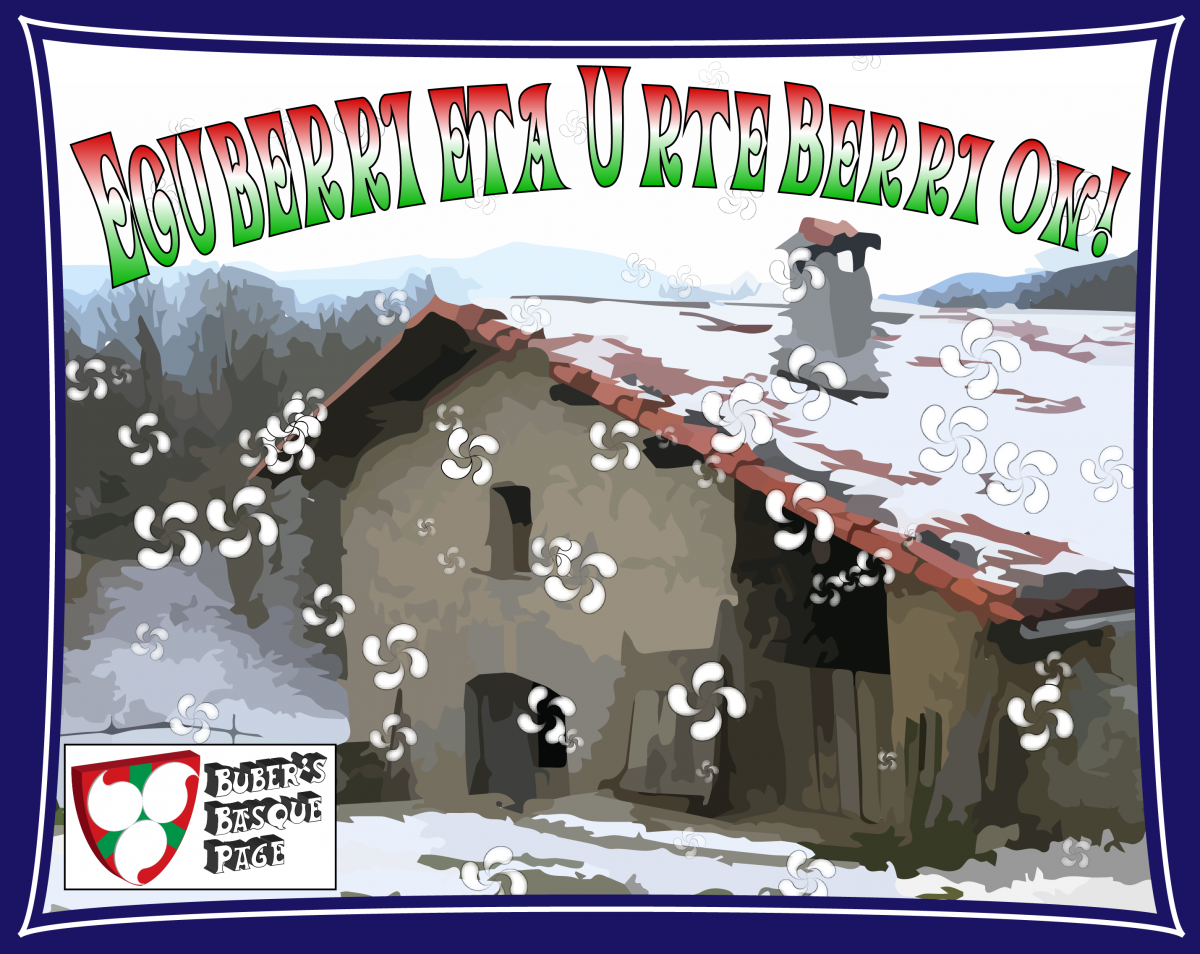A lot of our Christmas traditions grew out of pre-Christian practices and beliefs, often arising from celebrations of the Winter Solstice. The idea of Christmas carols – of going from house-to-house singing songs – stems from Yule Singing or Wassailing. Mistletoe came from Celtic beliefs that associated it with male fertility. In fact, the whole association of Yuletide with Christmas comes from Germanic and Nordic winder Yule celebrations. A big part of those celebrations is the Yule log, a tradition that is also found in the Basque Country.

- In the Basque Country, the Yule log goes by many names, including Gabonzuzi, Gabon-subil, Gabon-mukur, Olentzero-enbor, Onontzoro-mokor, Subilaro-egur, Suklaro-egur, Sukubela, and Porrondoko. And the customs associated with it are just as varied. One common element is the burning of a large log that is especially selected for the occasion. This log can be very large – in Trespuentes, where it is burned all year long, a pair of oxen was required to drag the log into the kitchen. In other places, it is only burned on Christmas Eve or until the last night of the year.
- In some places, more than one log is burnt. In Esquiroz and Elcano, they burned three logs, one dedicated to God, one to Our Lady, and one to the family of the house. In Eraso and Araquil, extra logs are thrown in the fire, one for each member of the family and an extra for the beggar.
- Because the log was burned on such special days, it has special powers and virtues. The Christmas Eve meal is often prepared on this fire, with special dishes, varying regionally, marking the occasion – things like zurruputun “soup with bits of cod” and azoliyo “cabbage seasoned with oil”, or intxur-salsa “pie with nuts” and oriyoasa “cabbage salad.”
- In some places, they make a roaring fire to prevent Olentzero from coming down the chimney and killing everyone with his sickle.
- The log has powers to protect animals from harm. In places like Esquiroz, Oyarzun and Araquil, on the first day of the new year, they placed the burnt log, after being concentrated to God, at the threshold of the house and forced all of their animals to cross over it, believing this would protect them from accidental death. In Aezcoa, they would save the ash, and if a cow got a hardened udder, they would warm the ash in the fire and use it as a salve to heal the diseased animal. In Olaeta, they placed the burnt log in the stable where it would protect the animals from disease.
- The ashes can also protect fields. In Ibárruri, they would save the ash and, on the say of Saint Steven, they would take the ash to the fields and scatter it in the shape of a cross. This was thought to kill the vermin that might harm the crops.
- On the other hand, in Salvatierra, they thought the log could help deter storms, and whenever one approached, they threw the log on the fire.
- The log can also protect the family. In Amorebieta, they made sure the log burned all through the night on Christmas Eve as this prevented anyone in the family from dying in the coming year.

Primary sources: Barandiaran Ayerbe, José Miguel de. GABONZUZI. Enciclopedia Auñamendi. Available at: http://aunamendi.eusko-ikaskuntza.eus/es/gabonzuzi/ar-55341/; Auñamendi Entziklopedia. Navidad. Available at: http://aunamendi.eusko-ikaskuntza.eus/es/navidad/ar-98099/
Discover more from Buber's Basque Page
Subscribe to get the latest posts sent to your email.



One thought on “Basque Fact of the Week: Gabonzuzi, The Basque Yule Log”